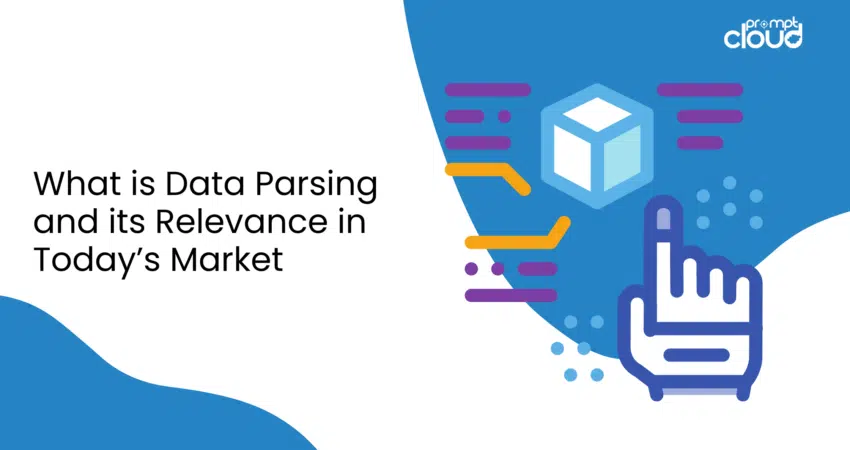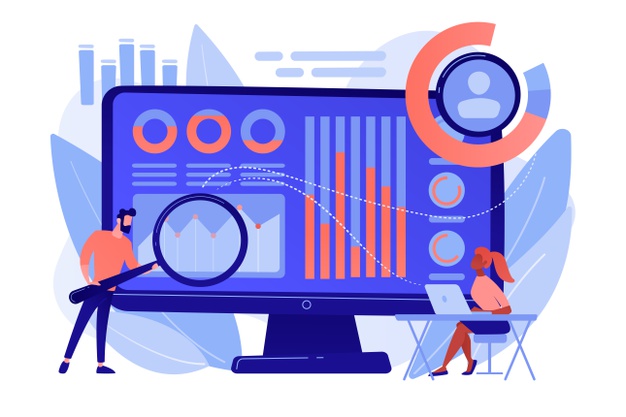
What is data parsing, we can simply put is converting unstructured data into a specified data format. When data needs to be processed for the desired outcome, converting a string of data to be compatible with current requirements is essentially parsing.
For example, parsing would be implemented if an organization wants to review all its stationery expenses in a year by combing through invoices in different currencies. Different regions have specific formats of depicting numeric data which can affect how the software interprets them. For accuracy, only numerical values without any special characters (commas, periods) will be extracted for further processing. This conversion of a string of data into a format readable by a machine is one of the applications of parsing.
Another simpler application of what is data parsing would be converting a raw HTML file that is difficult to interpret into a readable text file. In today’s age where companies deal with huge bucketloads of information, understanding and interpreting data can pose a major challenge. Industries such as Healthcare, E-Commerce, Banking, and Finance, require instant access to customers’ information that humans can comprehend in real-time. What is data parsing provides an effective solution to these problems.
How Parsing Data Adds Value
In a digital-first world, most people’s interactions with businesses occur online. From a company’s perspective, only hoarding customers’ data doesn’t add any value. The unstructured data must be converted into a structured intelligible form for computers to interpret and process, which humans can then understand.
Moreover, incorrect data attributable to human error or incompetency can have enormous repercussions. In 2013, US organizations were hit with over $7 billion in IRS civil penalties due to incorrect income and employment values reports. The same report shares insights that 27.5 percent of working professionals reported incorrect data had been manually entered into their enterprise software at their workplace.
Though this case alone makes a convincing argument for the importance of parsing, there are more benefits to it than from a legal viewpoint.
Fast and Accurate
Employees don’t have to put in countless hours sorting through manual data to retrieve insights useful to the business. Not only it is a painstakingly intensive process, but a waste of time and resources. Parsing techniques provide the same outcome in a fraction of the time and with higher accuracy.
Cost-Efficient & Low Investment
A parsing tool is a relatively low investment compared to the alternative of having a team only sorting through data. A software or skilled developer crew performing parsing as one of their functions can yield better results and over time create more impact.
Parsing itself creates easily understood information, hence no specific skillset or extra training is required to read the parsed data.
Greater Visibility
One of the main applications of parsing is to simplify data and understand the big chunks of information an organization may have. Incoherent data can be transformed into intelligible insights that can help multiple business functions – marketing, sales, finance, and even HR.
Data Parsing’s Relevance in Today’s Market
Most industries require parsing data in some shape or form. Real estate, Financial Services, and the up-and-coming Food Delivery sector rely on well-structured client data for their operations. Transforming data into a readable format for easy access is a game changer for most businesses. Parsing gives companies a competitive advantage over their peers as there is no trade-off between manpower constraints and staying cost-effective.
Extracting Valuable Information from Emails
For an organization receiving several hundred emails daily, going through every email to filter its relevance – important communication or junk email – and obtaining essential information from the message is quite a tedious process. It is also immensely time-consuming with a high possibility of human error.
Parsing data can scan emails without opening each email thread by searching for keywords that are of interest. It can condense this information into relevant chunks and provide a greater understanding of what’s being communicated without having to read every email. A parsing solution relieves the ineffective method of manual labor by providing the required data from the email to the user within minutes.
Tailored Marketing Campaigns
Businesses receiving a high volume of customer data through their platforms cannot realistically look through the data of each user to make informed decisions. Parsing can provide a remedy by pulling required information from customer data to be grouped into similar persona sets. This allows business to customize their marketing campaigns and target individual customers based on their profile, likes, and dislikes, reaching their desired audience demographic. Alternatively, the same solution can be used for product data to perform analysis and competitor benchmarking.
Financial Reporting
The business and finance sectors require accountants to sift through customer data and develop realistic financial models. A data parsing tool would meet the requirements of scraping and extracting useful data, used by accountants to analyze and create financial reports. As any error in the data can completely skew the reports, parsing provides a full-proof solution to manual sorting.
Scanning Resumes
Another useful and important application of a parsing solution is to scan the curriculum vitae (CV) of candidates for a job listing. Recruiters can be drowned in resumes for a single available position, making it increasingly difficult to review each one and select suitable candidates for interviews.
Parsing alleviates their burden by utilizing specific requirements to look for candidates who are a close match. These requirements can be certain skills, experience, and education, defined by the recruiter to refine the results and only select talent meeting the criteria.
Conclusion
For companies interested in web crawling to obtain real-time data that can optimize their business strategies, parsing would be one of the solutions implemented in the process. The applications of such a tool support a wide range of requirements and industries. Parsing solutions can improve overall efficiency and provide reliable data for analysis.
When integrated as a part of the web crawling process, the results can be optimized to serve the business needs and goals of your organization. To know more about our web crawling software, please get in touch with sales@promptcloud.com
Frequently Asked Questions
What do you mean by data parsing?
Parsing is the process of taking input data in one format and transforming it into a more readable, structured format that is easier to process and analyze. Essentially, parsing involves breaking down data into smaller elements and organizing these elements in a way that adheres to certain rules or formats. This process is crucial in data processing workflows, especially when dealing with large volumes of data or data from disparate sources.
Key Aspects of Parsing:
- Syntax Analysis: This step involves checking data against a predefined syntax and understanding how the data is structured. It is common in programming where compilers parse code to check for syntax errors and to understand the program structure.
- Data Conversion: Parsing often includes converting data from one format to another. For example, extracting data from a JSON file and converting it into a CSV format.
- Data Extraction: Parsing can be used to extract specific data from a larger dataset. For example, extracting prices and product names from an HTML document of an e-commerce site.
- Error Checking: During parsing, the data can also be checked for errors. If data does not conform to the expected format, the parser can highlight these errors, which can then be corrected or handled appropriately.




















